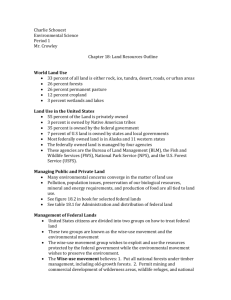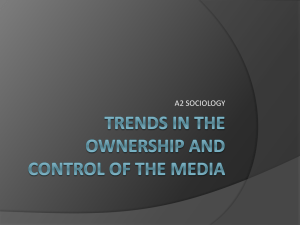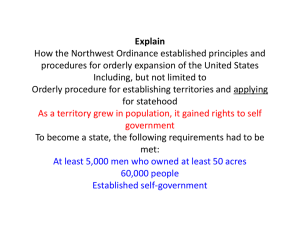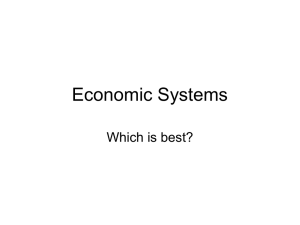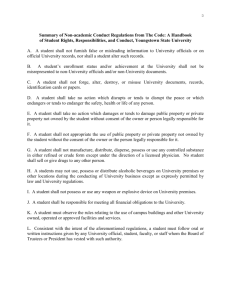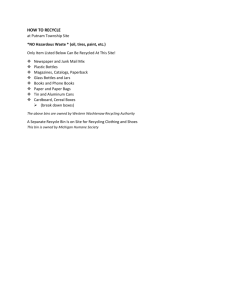What is resources? - e-CTLT
advertisement
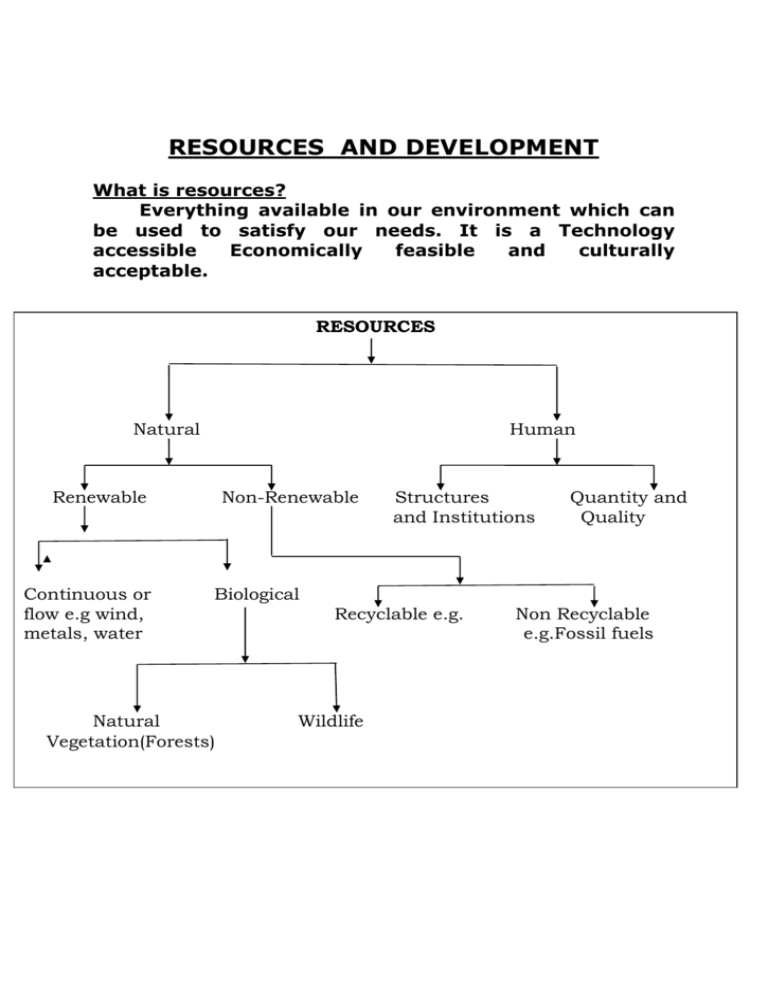
RESOURCES AND DEVELOPMENT What is resources? Everything available in our environment which can be used to satisfy our needs. It is a Technology accessible Economically feasible and culturally acceptable. RESOURCES Natural Human Renewable Continuous or flow e.g wind, metals, water Non-Renewable Structures and Institutions Quantity and Quality Biological Natural Vegetation(Forests) Recyclable e.g. Wildlife Non Recyclable e.g.Fossil fuels Classification of Resources a.Individual resources: these are owned by individuals privately. Like land owned by a farmer allotted to them by government against the payment of revenue. Urban people own plots, houses and other property. Some other examples include plantation, pasture lands, ponds, water in wells etc. b.Community owned resources: these include resources that are accessible to all the members of the community like the village grazing grounds, burial grounds, village ponds, public parks, picnic spots, playgrounds in urban areas are accessible to all the people living there. c.National resources: technically speaking all the resources belong to the nation because the country has legal powers to acquire even private property for public good. This we may have seen many times when government take fields owned by private individuals to construct roads, canals, railways. All minerals, water resources, forests, wildlife, land within the political boundaries and oceanic area upto 12 nautical miles from the coast termed as territorial water and resources therein belong to the nation. d.International resources: there are also international resources regulating resources. The oceanic resources beyond 200km of the Exclusive Economic Zone belong to open ocean and no individual country can utilize these without the consensus of international institutions. i.On the basis of origin: On the basis of origin we can classify resources as biotic and abiotic resources. a.Biotic resources: these resources are obtained from biosphere and they have a life such as human beings, flora and fauna, fisheries, livestock etc. b.Abiotic resourcs: it includes all those things which are composed of non-living things like rocks and metals. ii.On the basis of exhaustability: a.Renewable resources: the resources which can be renewed and reproduced by physical, chemical or mechanical processes are known as renewable or replenishable resources. Examples of such resources are solar and wind energy, water, forests and wildlife, etc. we can further divide into continuous or flow and biological. b.Non-renewable resources: this process takes place over a long geological time. Examples of such resources are minerals and fossil fuels. This may take millions of years in their formation. Some of the resources like metals are recyclable and some like fossils fuels cannot be recycled and as such they get exhausted with their use. iii.On the basis of ownership: a.Individual resources: these are owned by individuals privately. Like land owned by a farmer allotted to them by government against the payment of revenue. Urban people own plots, houses and other property. Some other examples include plantation, pasture lands, ponds, water in wells etc. b.Community owned resources: these include resources that are accessible to all the members of the community like the village grazing grounds, burial grounds, village ponds, public parks, picnic spots, playgrounds in urban areas are accessible to all the people living there. c.National resources: technically speaking all the resources belong to the nation because the country has legal powers to acquire even private property for public good. This we may have seen many times when government take fields owned by private individuals to construct roads, canals, railways. All minerals, water resources, forests, wildlife, land within the political boundaries and oceanic area upto 12 nautical miles from the coast termed as territorial water and resources therein belong to the nation. d.International resources: there are also international resources regulating resources. The oceanic resources beyond 200km of the Exclusive Economic Zone belong to open ocean and no individual country can utilize these without the consensus of international institutions. iv.On the basis of the status of development: a.Potential resources: resources which have not been put to use but are found in a region are called potential resources. Like the western parts of India more specifically Rajasthan and Gujarat have huge potential for the development of wind and solar energy. But these have not been developed properly so far. b.Developed resources: it includes resources which are surveyed and their quality and quantity have been determined for utilization. The development of resources however depends on technology and level of their feasibility. c.Stock: the materials in the environment which have the potential to satisfy human needs but human beings do not have the appropriate technology to access these, are included among stock. Water for example is a compound of two inflammable gases; hydrogen and oxygen which can be used as a source of energy. But we do not know how to use them for this purpose. Therefore it is considered as stock. d.Reserves: they are the subset of stock which are used with the help of existing technical knowledge. Reserves can be used for meeting future requirements. For example water in lakes, dams, forests etc is a reserve which can be used in the future.



